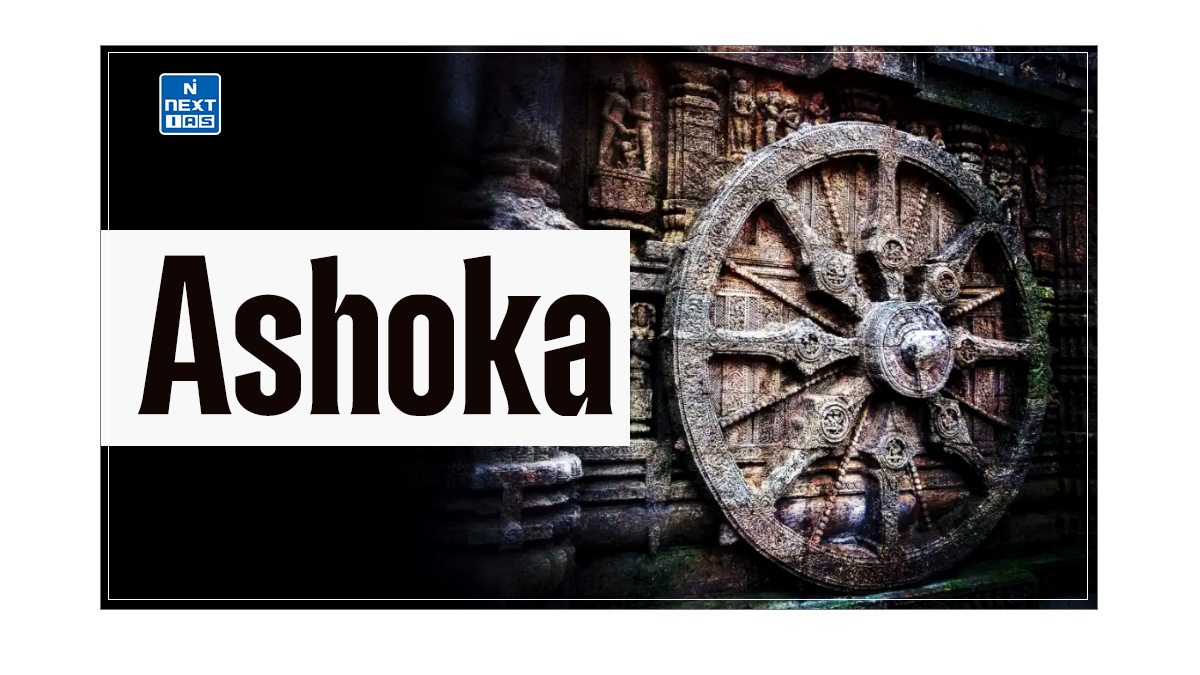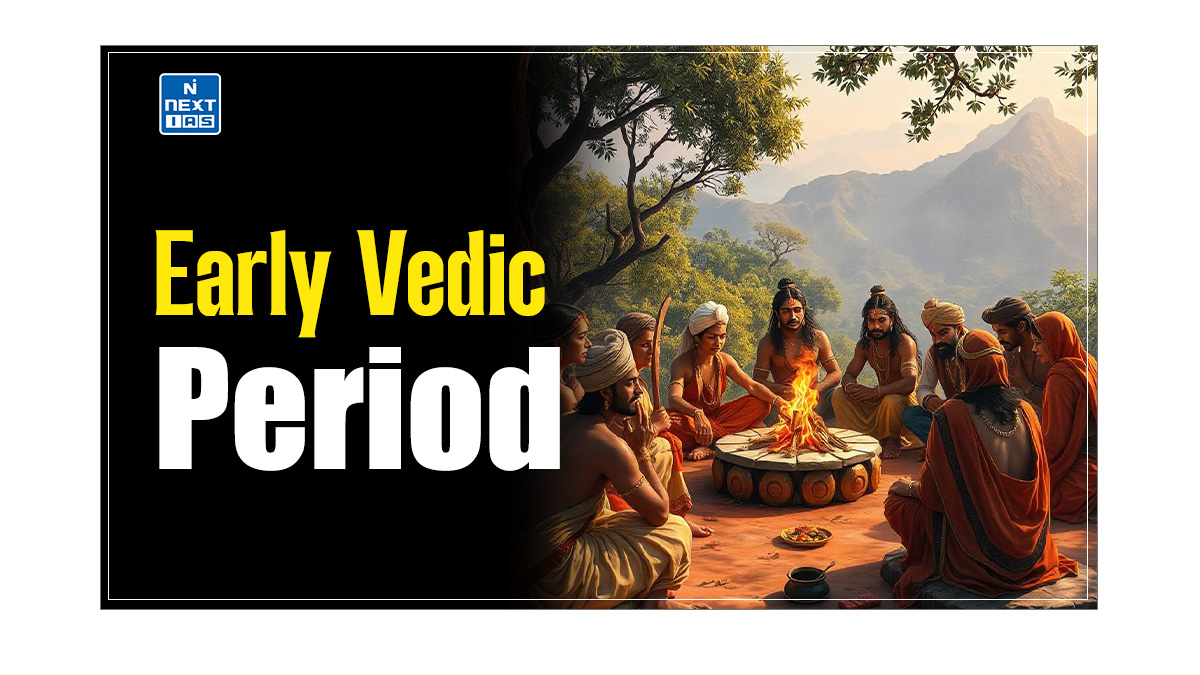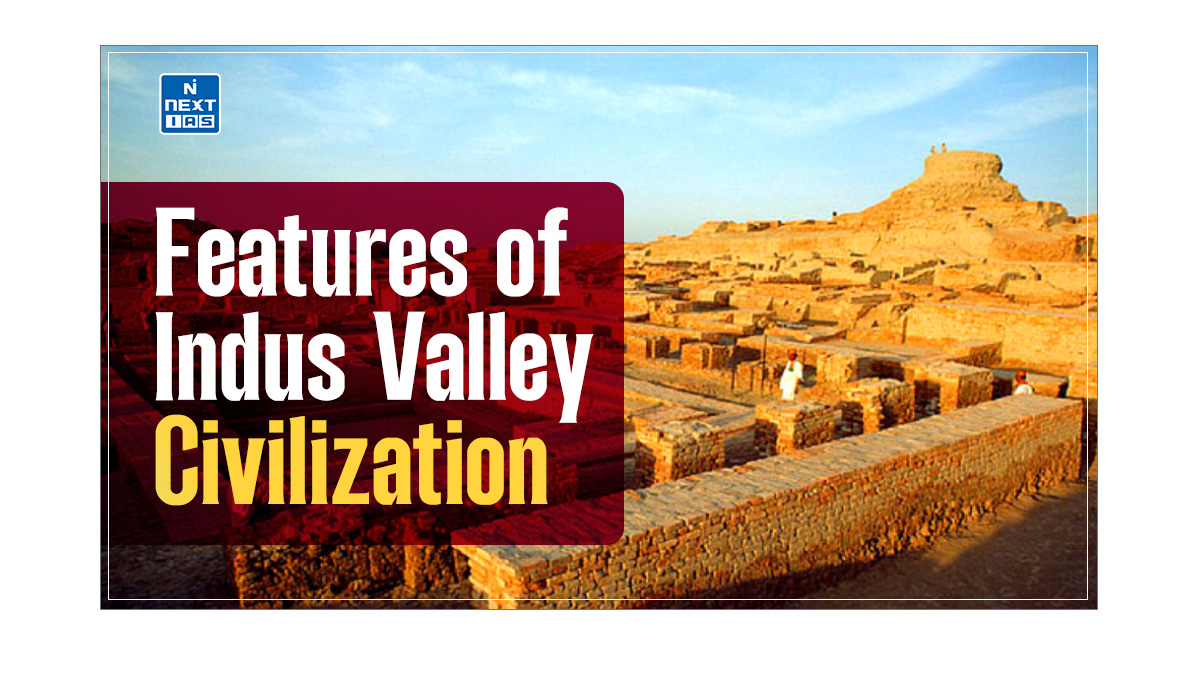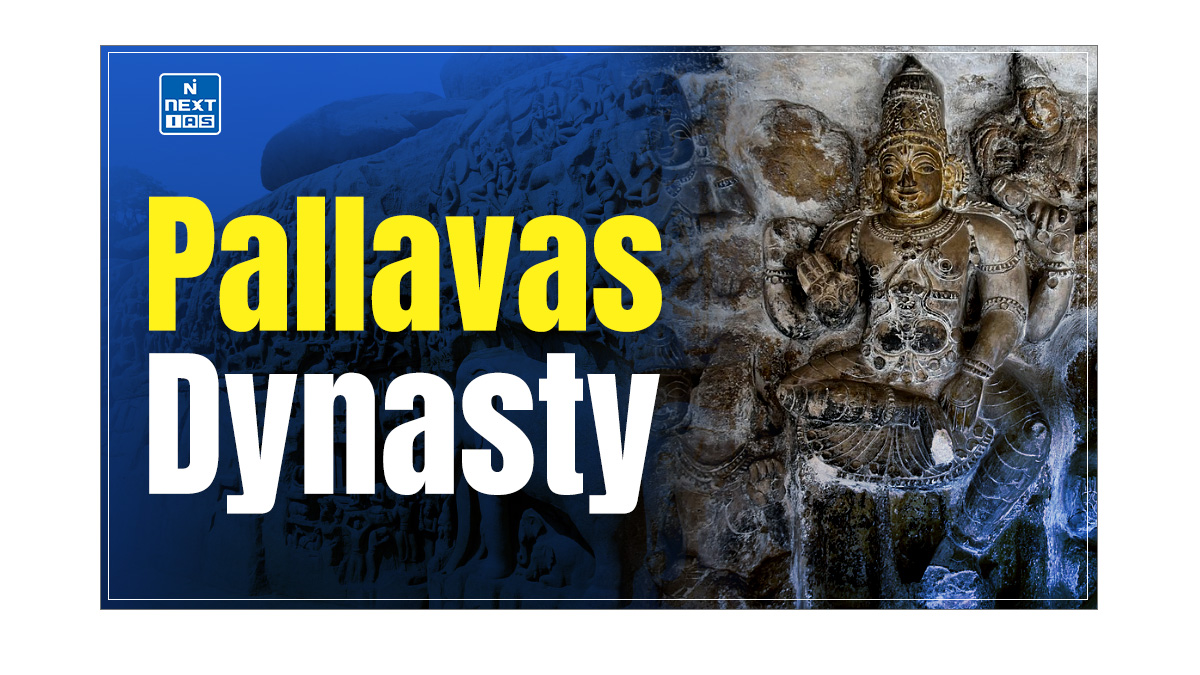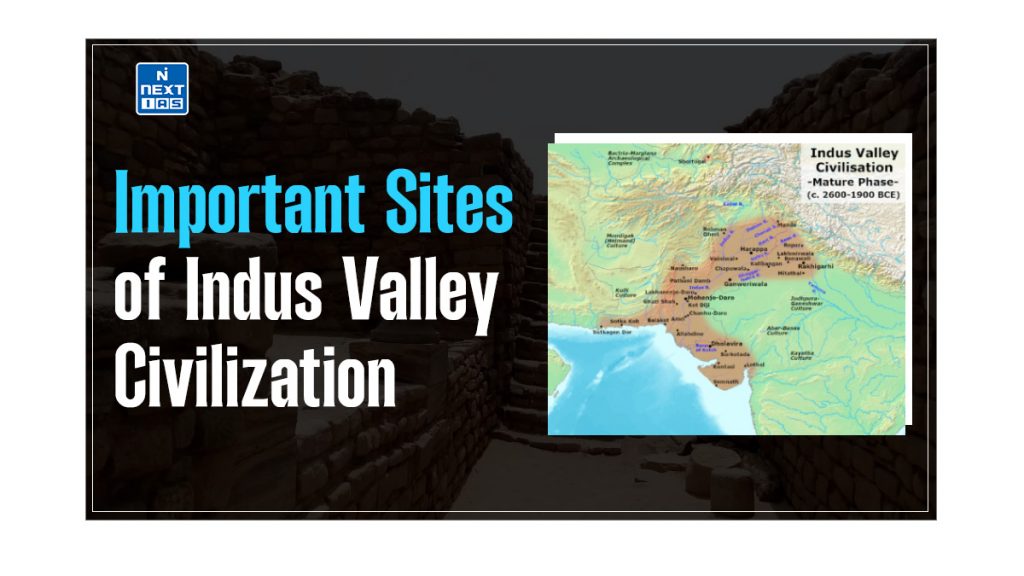
The Indus Valley Civilization (IVC) boasts several important archaeological sites that glimpse its advanced urban culture and societal organisation. These important sites, such as Harappa, Mohenjo-Daro, and Lothal, are significant for their sophisticated city planning, advanced drainage systems, and evidence of extensive trade networks. This article aims to study in detail the unique characteristics and historical importance of these key sites within the Indus Valley Civilization.
About Indus Valley Civilization
- The Indus Valley Civilization was one of the world’s earliest urban cultures, flourishing around 2500 BCE in present-day Pakistan and northwest India.
- Renowned for its advanced city planning, sophisticated drainage systems, and impressive architectural achievements, it stands out as a major centre of early civilisation in South Asia.
- This ancient civilisation is characterised by its well-organized cities, standardised brick constructions, and vibrant trade networks.
- The Indus Valley Civilization’s contributions to urban development and trade set foundational precedents for future civilisations.
Read our detailed article on the Indus Valley Civilization.
Important Sites of Indus Valley Civilization
- Important sites of the Indus Valley Civilization showcase remarkable achievements in urban planning, infrastructure, and trade.
- The sites are known for their advanced public hygiene features and large bathing structures, which reflect their high ritual and practical importance.
- Another site demonstrates a sophisticated grid layout and significant storage facilities, indicating a well-organized economic system.
- A third site is distinguished by its exceptional water management systems and monumental public buildings, emphasizing strategic planning and resource utilization.
- Lastly, an elaborate dockyard highlights the civilization’s maritime trade capabilities and economic interactions. These locations collectively reveal the civilisation’s complexity and ingenuity in various aspects of life.
A few important sites of the Indus Valley Civilization have been discussed in detail in the following section.
Harappa
- In the 1920s, archaeologists such as Daya Ram Sahni, M.S. Vats, and Mortimer Wheeler excavated Harappa, the first site on the Ravi bank in the Montgomery district of Western Punjab (then undivided British India).
- The mounds of Harappa cover an extensive area of about 150 hectares.
- The site features a citadel mound to the west and a larger lower town to the southeast. The citadel was fortified with a mud-brick wall, massive towers, and gateways and was elevated on platforms.
- Excavations revealed that the lower town had various workshops for making shell, agate, and copper artefacts, houses, drains, bathing platforms, and wells.
- Harappa is often called the city of granaries, with 12 granaries found on site.
- This suggests either a need for storage due to seasonal or low grain productivity, a large population, or changes in the floodplain of the River Indus.
- The lack of clusters of sites around Harappa is notable and intriguing.
- Evidence of coffin burials in an H pattern hints at possible invasions, and Harappa is identified with Hariyupiya in the Rig-Veda.
- The city also shows evidence of direct trade and interaction with Mesopotamia, evidenced by the presence of seals.
Mohenjo-Daro
- Mohenjo-Daro, meaning “Mound of the Dead,” is located in the Larkana district of Sind (Pakistan), approximately 5 km from the Indus River.
- It is the most prominent site of the Harappan Civilization, first discovered by Rakhaldas Banerji and Sir John Marshall.
- Excavations at Mohenjo-Daro unearthed significant structures such as the Great Bath, the Great Granary, a large assembly hall, a temple-like structure, the Pashupati seal, and a bearded man bust.
- The city exemplifies advanced town planning, with a division between the citadel and the lower city.
- The elevated citadel was designed for potential defence and as a symbolic landscape, though its defensive role cannot be entirely dismissed.
- In the southern part of the citadel mound, a large building divided into five aisles by rows of rectangular brick piers is considered an assembly hall.
- The lower city revealed numerous shops and workshops engaged in copper, bead, dyeing, pottery, and shellworking.
- Excavations also show evidence of continuous building and rebuilding due to frequent flooding, highlighting the city’s resilience and adaptability.
Great Bath
- The Great Bath is a remarkable example of ancient engineering, measuring 14.5 × 7 meters and 2.4 meters deep.
- It features a staircase oriented from north to south that descends into the tank.
- The tank’s floor and walls were made watertight using a thick layer of bitumen along the edges and finely fitted bricks on the floor, representing one of the earliest instances of waterproofing.
- The floor slopes towards the southwest corner, with outlets leading to a significant drain for water removal.
- Along the eastern edge of the building are a series of rooms, including a well that supplied water to the Great Bath.
- This structure was utilised for religious and ceremonial purposes.
Kalibangan
- Kalibangan, also known as the city of black bangles, is located on the banks of the dry bed of the Ghaggar River in the Hanumangarh district of Rajasthan.
- The city’s name derives from the thick clusters of black bangles scattered across its mounds. Kalibangan shows evidence of both early and mature Harappan phases.
- The city is divided into a citadel and a lower town, both fortified.
- One of the significant findings at Kalibangan is the large number of fire altars used for ceremonial sacrificial offerings, indicating the site’s association with community rituals.
- An important feature of Kalibangan is the burial ground located southwest of the citadel.
- This ground includes circular pits with grave goods such as pottery and bronze mirrors but without human remains.
- This practice, differing from the usual Harappan burial patterns, suggests the burning of corpses and a belief in the afterlife.
- Numerous bangles of terracotta, shell, alabaster, steatite, and faience found at the site highlight that bangle-making was a crucial craft in Kalibangan.
Kot-Diji
- Kot-Diji is situated on the left bank of the Indus River, opposite Mohenjo-Daro.
- F.A. Khan excavated the site.
- Kot-Diji is a precursor to the Indus Civilization, showing evidence of the pre-Harappan and mature Harappan phases.
- The site comprises two main parts: the citadel area on elevated ground and the lower area, surrounded by a fortification.
- The structures in Kot-Diji were constructed from unbaked mud bricks and stones.
- Excavations at Kot-Diji uncovered terracotta bulls, five figurines of the Mother Goddess, and large brick-lined ovens.
- The site displays signs of extensive burning, evident in both the citadel and lower sections.
Lothal
- Lothal is located between the Sabarmati and Bhogavo rivers in Saurashtra, Gujarat.
- S. R. Rao excavated the city.
- Lothal was laid out in a rectangular plan, with a brick wall surrounding the entire city, and was divided into a citadel and a lower city.
- The city exhibited notable variations in house sizes; some residences were large, featuring four to six rooms, bathrooms, a large courtyard, and a verandah.
- Some houses also had fire altars with lumps of clay, ash, and terracotta cakes.
- Lothal was a crucial trading hub, evidenced by the discovery of sixty-five terracotta seals with impressions of reed, woven fibre, matting, and twisted cords on one side and Harappan seals on the other.
- These seals are believed to record sales transactions.
- Lothal is also noted for being one of the first Harappan towns to cultivate rice.
- The city’s most distinctive feature is its dockyard, located on the eastern side and enclosed by burnt brick walls.
- The western embankment features a mud-brick platform, likely used for loading and unloading goods.
Surkotda
- Surkotda is located in Rapar Taluka of Kutch district, Gujarat, India.
- J.P. Joshi excavated it.
- Surkotda city is divided into a citadel and a lower town, which were fortified with burnt bricks.
- A grave has been found in association with a big rock, as in megalithic burials. In the last phase of this site, horses’ bones were discovered. These were rare findings in the Harappan civilisation.
Sutkagen-Dor
- Sutkagen-Dor is located near the Makran coast, near the Pakistan-Iran border.
- The settlement is landlocked in dry, barren plains, and its existence can only be explained as a trading seaport.
- Sutkagen-Dor city is divided into a citadel and a lower town. The citadel was fortified with a stone wall.
- In addition to mud bricks, stone rubble was liberally used for construction.
- Scholars believe that Sutkagen-Dor was cut off from the sea due to coastal uplift.
Ropar
- Ropar is located on the left bank of the Satluj in Punjab, India. This site is notable for containing remains of both pre-Harappan and Harappan cultures.
- It was the first location in post-partition India where the remains of the Harappa civilisation were excavated.
- The site features a fortified citadel and a lower part of the city, with buildings constructed from stone and mud bricks.
- Excavations at Ropar have uncovered faience beads and bangles, triangular terracotta cakes, and chart weights.
- Notably, Ropar provides evidence of a unique burial practice where a dog was buried beneath a human burial.
- The human remains typically have their heads oriented towards the northwest.
- Pots and personal ornaments such as faience or shell bangles, faience and semiprecious stone beads, and a copper ring accompany them.
Alamgirpur
- Alamgirpur is situated on the banks of the Yamuna River in Meerut district in Uttar Pradesh.
- This site was also called Parasaram-ka-khera.
- The site of Alamgirpur has a fortified citadel and a lower part of the city. The buildings were mainly made of burnt bricks.
Amri
- Amri is situated in the Sind province of Pakistan, south of Mohenjo-Daro.
- It has signs of pre-Harappan and mature Harappan phases but lacks the fortifications prominent in the Harappan civilisation.
- At Amri, the actual remains of the rhinoceros have been excavated.
Chanhu-daro
- Chanhu-Daro is located approximately 130 km south of Mohenjo-Daro.
- N. G. Majumdar first excavated it in March 1931.
- Unlike many other sites, Chanhu-Daro lacks fortifications and does not have a distinct separation between the citadel and the lower city.
- Earnest Mackay nicknamed this site the “Sheffield of Ancient India” due to the discovery of tools, spears, axes, copper knives, razors, vessels, and dishes.
- Excavations revealed three distinct cultural layers, from top to bottom: the Jhangar culture, the Jhukar culture, and the Harappan culture.
- Chanhu-Daro was a significant centre for craft activity, with findings including raw materials such as carnelian, agate, amethyst, and crystal, along with finished and unfinished beads and drills used for bead and ornament making.
- The site has been identified as home to a bead factory. Other crafts that likely thrived there included seal making, shell working, and the production of stone weights.
Banawali
- Banawali is situated near the dry bed of the Rangoi River in the Hissar district of Haryana and holds evidence for all three phases of the Harappan Civilization:
- Early phase,
- Mature phase and
- Late phase.
- The site was divided into a citadel and a lower town, both fortified and separated by a wall.
- Baked bricks were used for wells, bathing pavements, and drains, while mud bricks were used for the rest of the structures.
- During excavation, a house with multiple rooms, a kitchen, a toilet, and a jar believed to be a wash basin was discovered.
- Numerous seals and weights suggest that the house may have belonged to a merchant.
- Additionally, a terracotta model of a plow and many stone weights in small denominations were found, indicating that Banawali was primarily a trading centre.
Rakhigarhi
- Rakhigarhi is situated in the Hissar district of Haryana and is the largest Harappan site in India.
- The site was divided into a citadel and a lower town. The citadel was fortified and featured platforms, a brick wall, fire altars, and drains of various sizes.
- During excavations, a lapidary workshop was identified, containing unfinished beads and roughly cut stones, primarily carnelian, chalcedony, agate, and jasper.
- The site also had bead polishers for smoothing the beads and a hearth for heating stones.
- Additionally, evidence of bone and ivory working was found, with finished and unfinished bone points and engravers.
- A wooden coffin, peculiar to Harappan burial practices, was also discovered at Rakhigarhi.
Rangpur
- Rangpur is near Vanala on the Saurashtra peninsula in Gujarat, western India.
- It is situated northwest of Lothal, on the tip of the Gulf of Khambhat and the Gulf of Kutch. Madho Swarup Vats excavated this site in 1935.
- Rangpur was divided into a fortified citadel and a lower town. The citadel served as a trading port and a Harappan city. During excavations, evidence of rice cultivation emerged at Rangpur.
Dholavira
- Dholavira is located on Kadir Island in the Rann of Kutch in Gujarat.
- Dholavira is divided into three parts:
- the citadel,
- the ‘bailey’ area to its west, and
- the large middle town in the north.
- Substantial evidence of habitation outside the fortification wall was seen during the excavations.
- In Dholavira, sandstone was used to make buildings from mud bricks. The citadel had a large well, an elaborate drainage system, and large buildings.
- Dholavira must have been an important stopping point on busy maritime trade routes. In the middle town, various craft activities were carried out, such as bead making, shell working, and pottery making.
- Dholavira had an excellent rainwater harvesting system, a feature not in other Harappan Civilization sites. Dams were built across these to channel the water into reservoirs.
Conclusion
The important sites of Indus Valley Civilization offer a window into a remarkable ancient culture that set foundational precedents for urban planning, craftsmanship, and trade. Each site’s distinctive features and artefacts contribute to our understanding of a civilization that thrived over 4,500 years ago. The enduring legacy of the Indus Valley Civilization continues to captivate historians and archaeologists, revealing the ingenuity and complexity of one of the world’s earliest urban societies.
Frequently Asked Questions (FAQs)
Name four important sites of the Indus Valley Civilization.
The four important sites of the Indus Valley Civilization are:
– Mohenjo-Daro
– Harappa
– Dholavira
– Lothal
